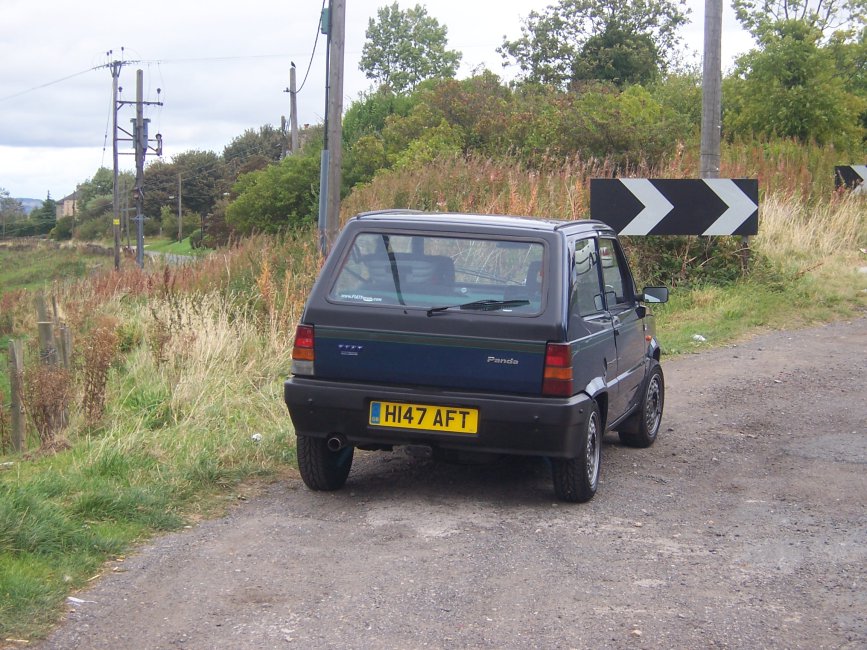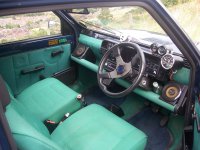Introduction
been stubbornly refusing to stir outside the panda section for a long while but put a fair bit of time into tidying the old lad up this summer so thought I'd stick some photos together to show the state of play just now.
So for those of you who aren't al ready au fait, this is Grumbleweed, a 1990 Panda Sergio Tacchini with a mix of scrapyard warrior mods and fresh bits:
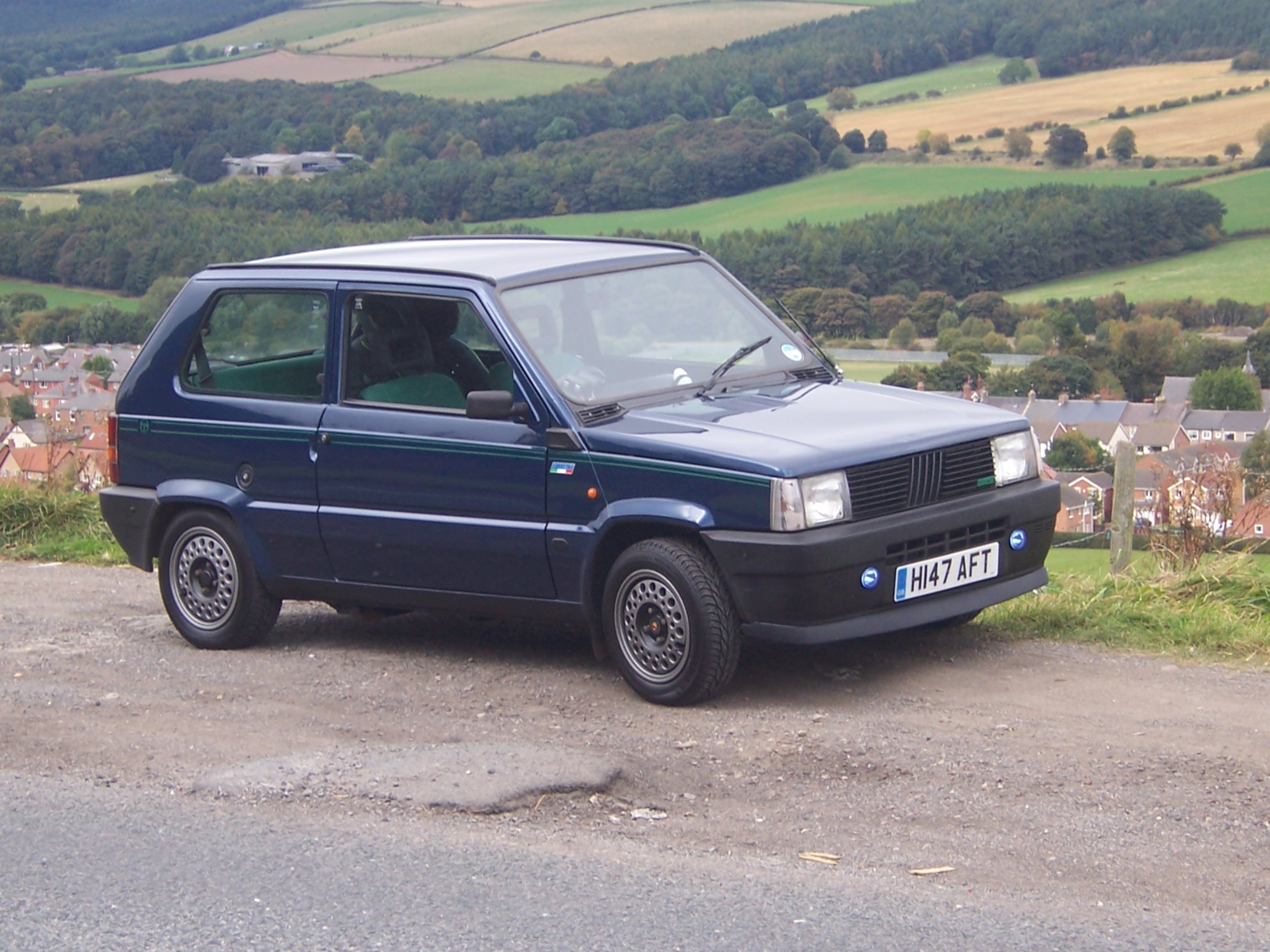
look! even found some scenery to take some pics

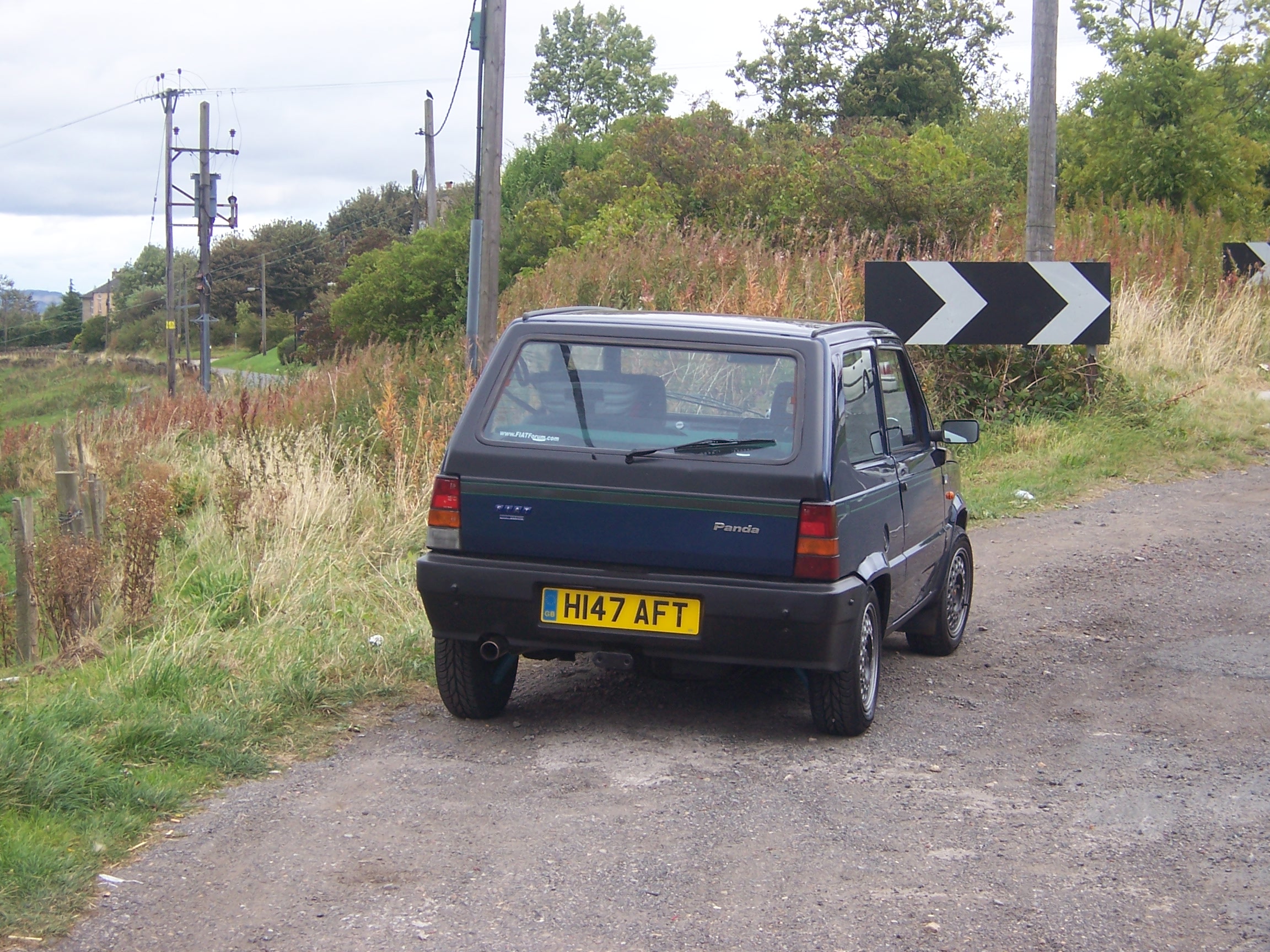
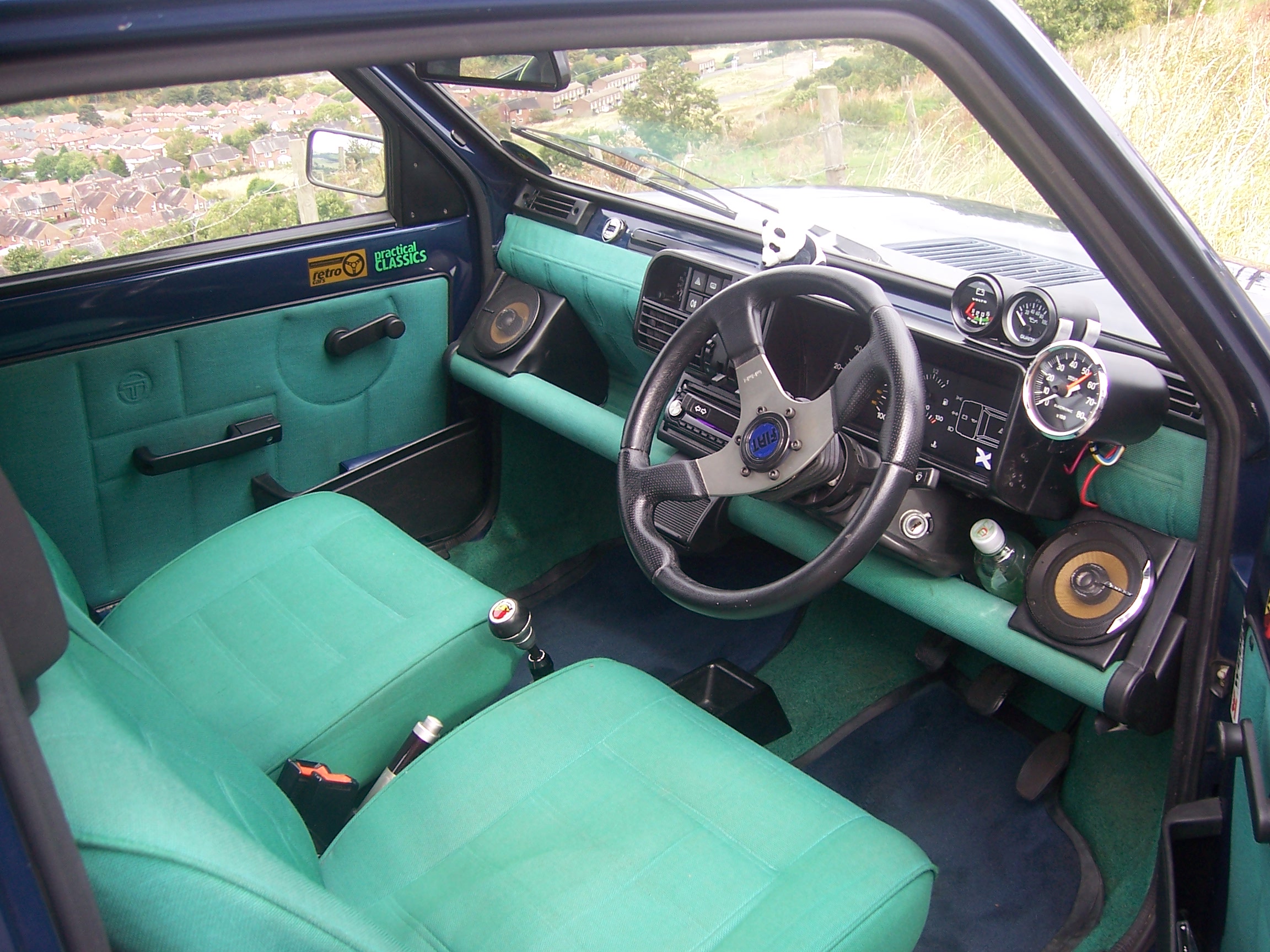
Highlights include the new mk2 golf splitter and chavtastic blue lensed driving lamps (they were reduced OK) in the front bumper, Momo steering wheel, aftermarket gearknob on shortened gearstick, 40mm drop on new standard shocks, mystery retro pepperpot wheels (anybody any idea? came off a Tipo in a scrappy) converted to Uno electronic dizzy, K&N panel filter in standard airbox with shortened intake, Powerflow stainless exhaust rear section with Y10 standard front section, array of extra instrumentation (tacho, oil pressure and volts) and assorted other bits and bobs dotted around that my father in law (the previous owner) fitted and I just find out about when new stuff I buy mysteriously doesn't fit
Andrew.
So for those of you who aren't al ready au fait, this is Grumbleweed, a 1990 Panda Sergio Tacchini with a mix of scrapyard warrior mods and fresh bits:
look! even found some scenery to take some pics
Highlights include the new mk2 golf splitter and chavtastic blue lensed driving lamps (they were reduced OK) in the front bumper, Momo steering wheel, aftermarket gearknob on shortened gearstick, 40mm drop on new standard shocks, mystery retro pepperpot wheels (anybody any idea? came off a Tipo in a scrappy) converted to Uno electronic dizzy, K&N panel filter in standard airbox with shortened intake, Powerflow stainless exhaust rear section with Y10 standard front section, array of extra instrumentation (tacho, oil pressure and volts) and assorted other bits and bobs dotted around that my father in law (the previous owner) fitted and I just find out about when new stuff I buy mysteriously doesn't fit
Andrew.


